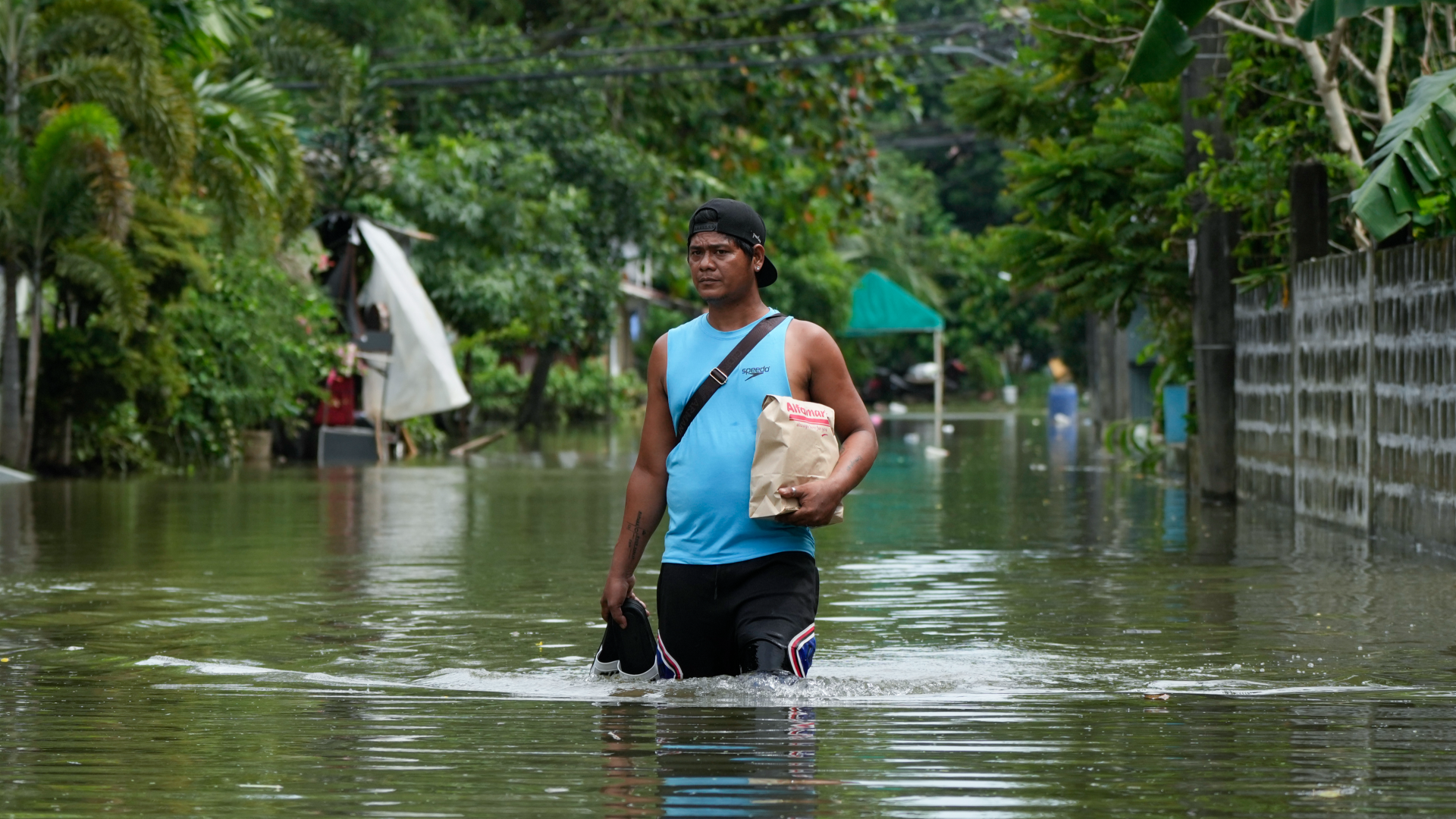Storm Responsible for 82 Deaths in Northern Philippines Might Make a U-Turn
A storm that has claimed the lives of 82 individuals in Northern Philippines might be making a U-turn.

However, the threat may not be over. State meteorologists have raised the unusual possibility that the storm—currently the 11th and one of the deadliest to hit the Philippines this year—could reverse course next week due to the influence of high-pressure winds in the South China Sea.
A provincial police chief in the Philippines reported that Friday's toll included 49 fatalities, primarily from landslides triggered by Trami in Batangas province, located south of Manila. This brings the total number of storm-related deaths to at least 82.
In Batangas, 11 individuals remain unaccounted for, as detailed by Col. Jacinto Malinao Jr. in a phone conversation with The Associated Press from Talisay, where he was with a villager whose wife and child were buried under debris.
Using a backhoe and shovels, police hurriedly sifted through about three meters of mud, stones, and wreckage, discovering a portion of a head and a foot suspected to belong to the missing woman and child.
"He's simply devastated," Malinao remarked about the villager, a fisherman whose family was caught in the landslide during a fierce storm that occurred Thursday afternoon while he was tending to fish cages.
"He's in shock and couldn't speak, and we're only asking him to point to where their bedroom was located so we can dig in that part," Malinao added.
As of Friday afternoon, the storm was reported to be located 410 kilometers west of Ilocos Sur in the Philippines, with sustained winds reaching 95 kph and gusts up to 115 kph. It was moving northwest at a speed of 30 kph towards Vietnam, where Trami is expected to impact starting Sunday, assuming it remains on its current path.
The Philippine weather agency warned that prevailing high-pressure winds and other meteorological factors in the South China Sea might cause the storm to head back toward the Philippines.
During an emergency meeting with Cabinet members and disaster-response officials, President Ferdinand Marcos conveyed his frustration, asking about the potential for the storm to return.
"What is the forecast for that? Is it possible it would return?" Marcos inquired.
A government forecaster informed him that while Trami could redirect toward the western Philippines early next week, it’s more probable that it will move away from the Philippines again without making landfall.
"It doesn't have to make landfall for the damage to occur," Marcos noted, referencing the ongoing heavy rain still being felt across the nation due to Trami.
Marcos also mentioned an additional storm forming in the Pacific Ocean that might pose another risk to the country.
"Oh God, it is what it is. We just have to deal with it," he said.
Jofren Habaluyas, a state forecaster, shared that Trami's possible U-turn has garnered attention from meteorological experts across Asia, including those from Japan, who have been assisting the Philippines in tracking the storm.
Among the 82 fatalities reported was a group of 26 villagers who lost their lives to floodwaters and landslides in the severely impacted Bicol region, known for its agricultural output and tourism, particularly due to Mayon, one of the Philippines' 24 most active volcanoes.
At least 27 individuals are still missing across various provinces, with 17 of them in Batangas, per reports from Malinao and the Office of Civil Defense.
Despite not intensifying into a typhoon, Trami delivered extraordinarily heavy rainfall in some areas, leading to flash floods as regions received one to two months' worth of rain within just 24 hours.
Officials from Naga City, where 11 people drowned, along with authorities from Camarines Sur and Albay, urgently requested more rescue boats to reach those trapped on the upper floors or roofs of their homes as floodwaters surged.
In the vicinity of Mayon Volcano in Albay province, debris flows and mud cascaded into nearby towns, engulfing homes and vehicles.
Disaster officials reported that more than 2.6 million people have been affected, with nearly 320,000 displaced to evacuation centers or the homes of relatives.
To ensure public safety, the government has closed schools and offices for a third day on Friday on Luzon, the northern island, and suspended inter-island ferry services, leaving thousands stranded.
In Vietnam, state meteorologists have cautioned of heavy rainfall expected in the central regions. Prime Minister Pham Minh Chinh has urged coastal areas to remain vigilant, closely monitor the storm’s trajectory, and prepare for potential emergencies.
Last month, Typhoon Yagi ravaged Vietnam, resulting in 323 deaths and extensive damage estimated at $3.3 billion, according to a government report.
The Philippines, an archipelago situated between the Pacific Ocean and the South China Sea, typically faces around 20 storms and typhoons each year. In 2013, Typhoon Haiyan, one of the most powerful storms recorded, caused over 7,300 deaths or disappearances and devastated entire communities.
Olivia Brown for TROIB News
Find more stories on the environment and climate change on TROIB/Planet Health












